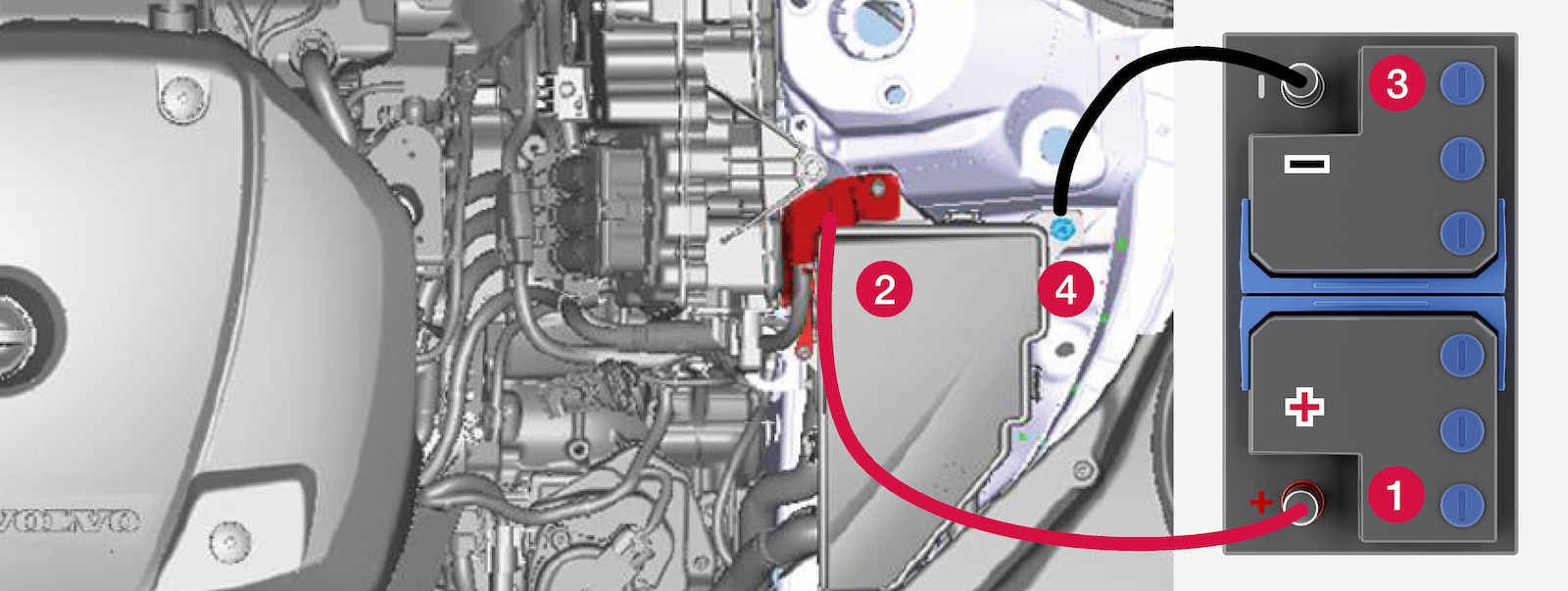Jump starting using another battery
If the vehicle's start battery(12 V) is discharged, current from another battery can be used to start the vehicle's electrical system.
If the 12 V battery (start battery) is discharged, the vehicle's electrical system can be jump-started from another vehicle's battery using jumper cables. If the hybrid battery is also discharged, it must be charged using the charging cable after the electrical system is started so that the engine can be started.

Important
If a fuse has become overloaded, 12 V battery fuse failure Service required will be displayed in the instrument panel. Volvo recommends contacting an authorized Volvo workshop.
To avoid short circuits or other damage, the following steps are recommended when jump starting the battery:
Important
Note
Important
Remove the jumper cables in the reverse order ‒ first the black cables and then the red cables.
Make sure that none of the clamps of the black jumper cables come into contact with the vehicle's positive charging point, the assisting vehicle's battery's positive terminal, or either of the red jumper cable's connected clamps.
Warning
Warning
- Batteries generate hydrogen gas, which is flammable and explosive.
- Do not connect the jumper cable to any part of the fuel system or to any moving parts. Avoid touching hot manifolds.
- Battery fluid contains sulfuric acid. Do not allow battery fluid to contact eyes, skin, fabrics or painted surfaces.
- If contact occurs, flush the affected area immediately with water. Obtain medical help immediately if eyes are affected.
- Never expose the battery to open flame or electric spark. Do not smoke near the battery. Failure to follow the instructions for jump starting can lead to injury.